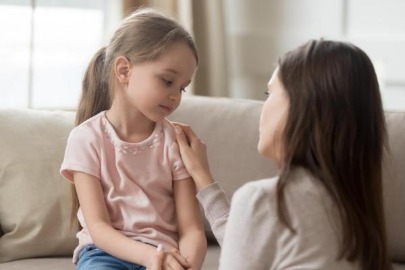
JACKSON, Miss. (NewsNation Now) — It’s been an ongoing debate since the start of the pandemic: should schools remain open?
Across the country — some school districts like Los Angeles and Chicago — made the decision to switch to virtual learning as coronavirus cases rose in those areas.
Some of the nation’s top health officials say kids can go to school in-person, and safely.
President-elect Joe Biden unveiled out his goal to open most K-8 by the end of his first 100 days in office.
Now, a new study out of Mississippi suggests students who have tested positive for the virus might not necessarily have contracted it in classrooms.
The bottom line of this study: Children are more likely to be infected by a family member who doesn’t take the proper safety measures, than at school.
That’s because children have a lower rate of infection and transmission, the author of the study said.
Children are more at risk from contracting COVID-19 at a holiday party or family gathering, than they are from being in the classroom, or in child care, according to the study led by the University of Mississippi Medical Center, in collaboration with the U.S. Centers for Disease Control and Prevention.
Children who tested positive were more likely to have attended family gatherings and have visitors at home and their parents and guardians were less likely to report wearing masks.
Dr. Charlotte Hobbs, a mother and professor of pediatric infectious diseases, led the study.
“This echoes what we’ve seen in adult studies with household transmission,” Hobbs said.
Hobbs said they also found that children who attended school or daycare and tested positive reported that other children or staff members were not taking safety measures like masking, social distancing or hygiene.
The researchers interviewed about 400 parents and pulled a list of children who had taken COVID-19 tests.
She said because the disease tends to be less severe in children, it has been studied less, and as a result children are suffering.
“If at school appropriate mitigation efforts are being [observed], being at school is actually in fact perhaps much lower of a place where a child would have the risk of contracting COVID as opposed to having contact with an adult who is infected,” Hobbs said.
California Gov. Gavin Newsom unveiled his $2 billion plan for reopening schools earlier this week.
“Transmissions among and from younger students to students is simply not common,” Newsom said.
He hopes to be back on track by the spring, with distance learning still an option.
Randy Weingarten, President of the American Federation of Teachers, said she believes kids should be in school, too, but only if funding is available and assurances are made to take the proper safety measures.
“In hospitals, you have those safeguards in place, or people are asked to leave,” Weingarten said. “And in schools, particularly when you’re working with kids, you have to be extra careful. What is ironic these days, is that young kids actually are following the rules, whereas older kids are not, and we actually thought it was going to be the opposite. But there’s no excuse for treating anybody as expendable, and this either-or question is wrong.”
Hobbs also said even though COVID-19 vaccines are becoming available, now is not the time for parents, families and schools and child care centers to let down their guard and remember one of the available vaccines is only approved for those 16 and older, the other is for those 18 and older.